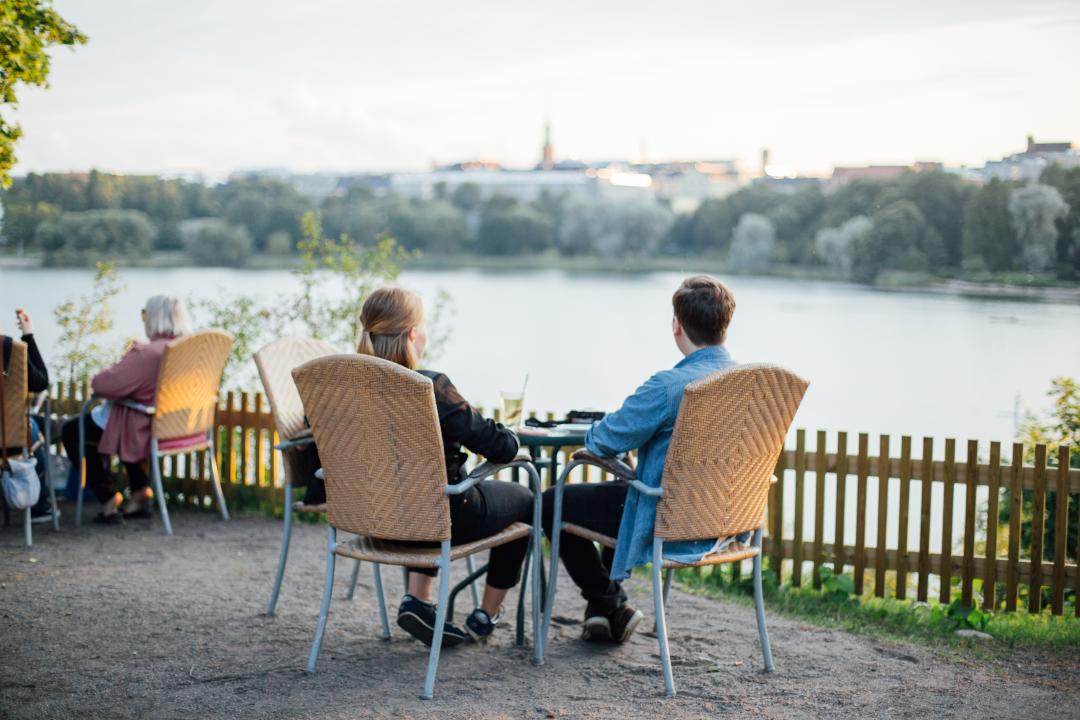
Route distance approx. 4 km
Route starts from Helsinki Central Station. Designed by legendary Finnish architect Eliel Saarinen and inaugurated in 1919, this impressive granite railway station is famous for its clock tower and the two pairs of statues holding spherical lamps designed by sculptor Emil Wikström.
Completed in 2018, the Amos Rex art museum was designed by JKMM Architects. It comprises new subterranean exhibition spaces and the Lasipalatsi “glass palace” that was built in the 1930s.
The exhibitions at the Natural History Museum brings the nature of Finland and the rest of the world to life. This museum building was built in 1913 and originally served as a Russian boys’ school.
Museum of Contemporary Art Kiasma is one of the leading museums of contemporary art in the Nordic region. It was designed by US architect Steven Holl and completed in 1998. Kiasma is part of the Finnish National Gallery.
Designed by J. S. Sirén and completed in 1931, Parliament House represents 1920s Classicism with elements of Functionalism as well. The plenary sessions of Parliament are open to the public, and guided tours are also available.
Opened in 2011, Musiikkitalo (Helsinki Music Centre) was designed as a concert venue and social space that is open to all. Musiikkitalo is home to the Helsinki Philharmonic Orchestra, the Finnish Radio Symphony Orchestra and the Sibelius Academy.
Built in 1846, Villa Hakasalmi is part of the Helsinki City Museum. The villa’s most famous resident was Aurora Karamzin, a prominent philanthropist in the 19th century. Located in the courtyard of the villa, Café Rakastan is open daily - including Sundays - and serves vegan cuisine.
The permanent exhibitions at the National Museum of Finland present Finnish history from prehistoric times to the 19th century, while the temporary exhibitions are surprisingly diverse. Completed in 1916, the museum is one of the most impressive examples of National Romantic architecture in Finland. It was designed by Herman Gesellius, Armas Lindgren and Eliel Saarinen.

One of the most cohesive designs by legendary Finnish architect Alvar Aalto, Finlandia Hall is also a popular tourist attraction for its design and architecture. It is one of the most prominent congress, concert and event centres in Finland.
The Hesperia Park beside the bay is a popular place to relax. In the 19th century, there was a restaurant that offered a wide range of entertainment. When the lease of the land was expired in 1892, it was transformed into a public park.
The modern home of the Finnish National Opera and Ballet was designed by Finnish architects Eero Hyvämäki, Jukka Karhunen and Risto Parkkinen. The opera house opened in 1993.
The Olympic Stadium was originally built to host the 1940 Olympic Games, which were postponed due to the outbreak of war. The Olympics eventually made it to Helsinki in 1952. Designed by Finnish architect Jorma Järvi, the Swimming Stadium was also originally built for the 1940 Olympic Games. It hosted the swimming and diving events in 1952.
Since it first opened to the public in 1893, the Winter Garden has remained a popular attraction among locals for over 125 years.
Linnanmäki Amusement Park is Finland’s oldest and most popular amusement park. It has over 40 rides and games, as well as cafes and restaurants. Its most popular ride is still the wooden roller coaster, which dates back to 1951.

The wooden villas along Linnunlauluntie (“Birdsong Road”) were built in the 19th century. Villa Kivi is a writers’ home, while the other villas are residences. Among the villas you will also find Sinisen Huvilan Kahvila (“Blue Villa Café”) and Café Taideterassi (“Café Art Terrace”). Here you can rent stand-up paddleboards to see all the sights from the water. You can rent a city rowing boat from Café Finlandia at Finlandia Hall.
Töölönlahti Park was inaugurated in summer 2016. Designed by landscape architects Näkymä Oy, the park covers an area of 9.5 hectares and includes the Alvar Aalto playground.
Makasiinipuisto park was built on the site of the old railway warehouses (“makasiinit” in Finnish). The park has a street basketball court and the children’s playpark “Loru”.
The Kansalaistori square is a popular public space in the heart of the city.
Helsinki Central Library Oodi opened in 2018 as part of Finland’s centenary celebrations. In addition to books, Oodi offers recording studios, 3D printers, cafés and a cinema. Designed as a public living room, Oodi is open seven days a week.
Sanomatalo houses the editorial offices of Finland’s biggest newspapers and radio stations, the head offices of numerous companies, and open space for the public and events. Designed by Jan Söderlund and Antti-Matti Siikala, the building was completed in 1999.
